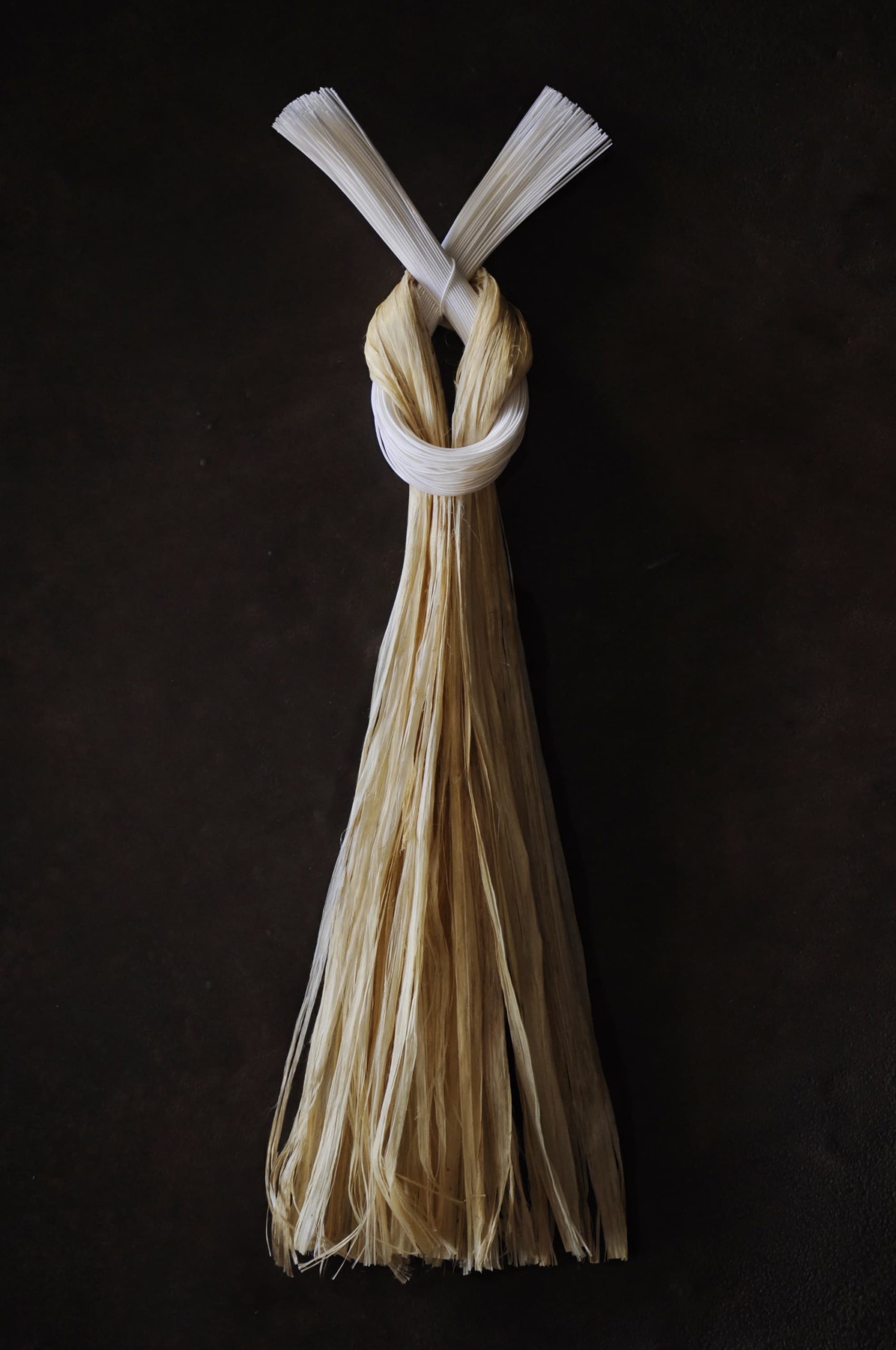During the Japanese New Year, traditionally associated with an image of sobriety and purification rites, the front of houses are covered with all kinds of knots: twisted rice straw ropes, strings of white and red paper, knotted or tied in a more or less complex manner. They evoke, as if in miniature, the imposing braided ropes (shimenawa) hung in Shinto shrines to symbolically delimit the enclosure of the place. These knots and ties serve above all to distinguish the sacred and the profane. The Japanese name for this border, kekkai, contains the semantic concept of knot, expressed by the verb musubu (to tie, to bind, to conclude).
The etymology associates the verb musubu with the nouns musume (daughter) and musuko (son): the complementary association of opposites gives rise to a new being that carries the timeless spirit inherited from the ancients. This fundamental semantic relationship between the node and birth is found not only on the lexical level (the node produces births, just as much as marriages associations and societies of all kinds), but also in most of the practices and places that constitute Japanese society. From the traditional topknot hairstyle (himada-mage) and clothing (the kimono as well as the belt of sumo wrestlers) to packaging in its abundant variety (the furoshiki – the technique of tying the technique of knotting fabrics into wrapping cloths – or mizuhiki – the art of braided paper cords), through to food (seaweed rolls filled with fish, or rice dumplings aptly named omusubi), the daily practice of knotting borrows its forms the ancestral symbolism of birth.
This symbolic link is reinforced by the similarity of the braided ropes to the mating of snakes, a fundamental image if ever there was one, since these sacred animals were considered to be divine envoys. This symbolism has been the subject of numerous ethnological studies in Japan, where monographs have been devoted to the knot. However, the musubi culture is not only a heritage from the past, as it is perpetuated in the braided ropes of the New Year, it is also a surprising reservoir of forms. The combination of various knotting techniques, the association of heterogeneous materials more or less transformed by man (twisted rice straw, paper cords) with a rich symbolism stimulate the formal imagination. Far from being reduced to an immutable traditional practice, it lends itself to contemporary reinterpretation, and is a demanding exercise for anyone who wants to try their hand at a basic design practice. For the new year, OGATA presents a collection of original pieces reinterpreting musubi culture – linking past and present, east and west, and pointing to a geographical, temporal and symbolic elsewhere.
